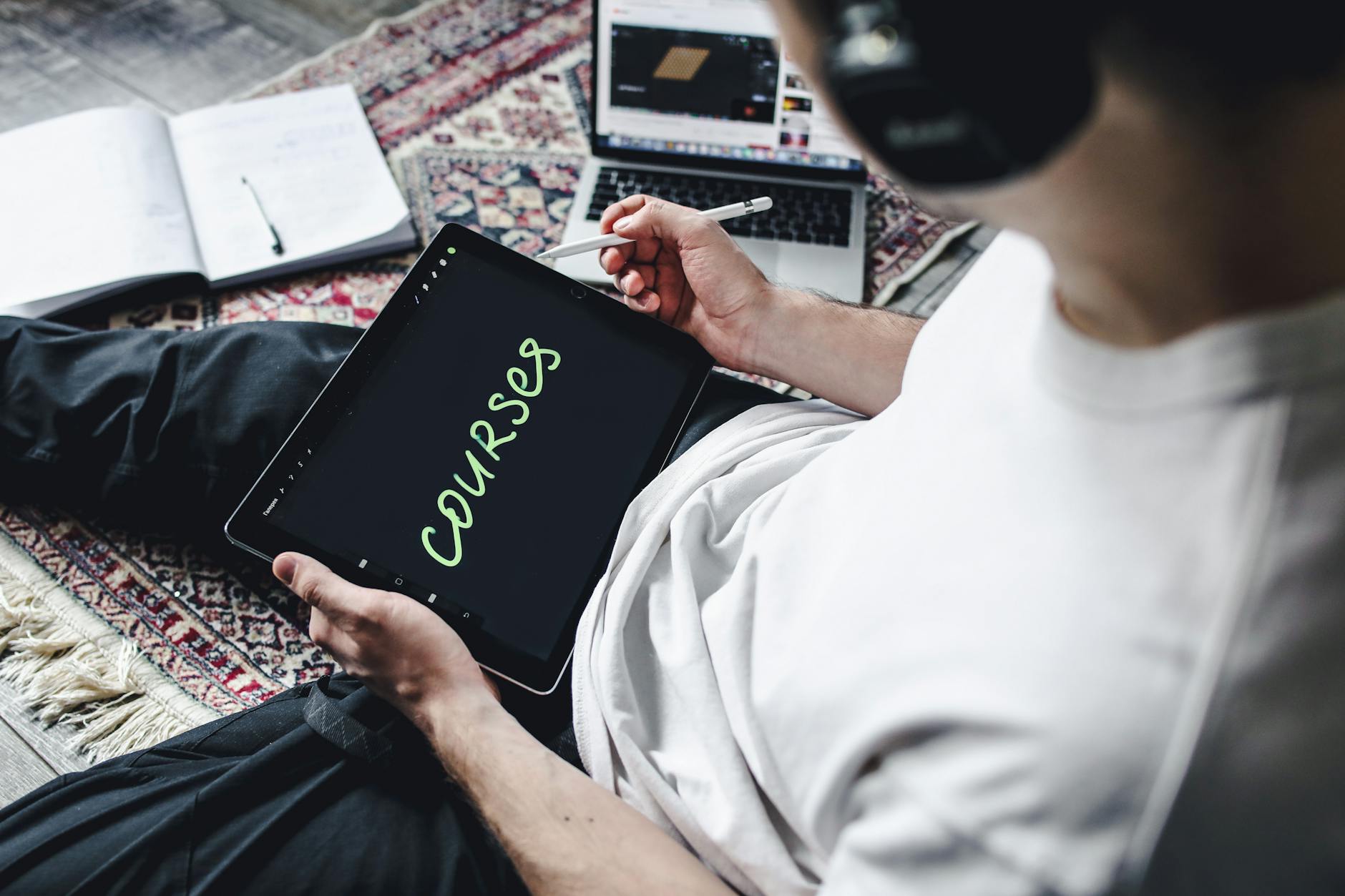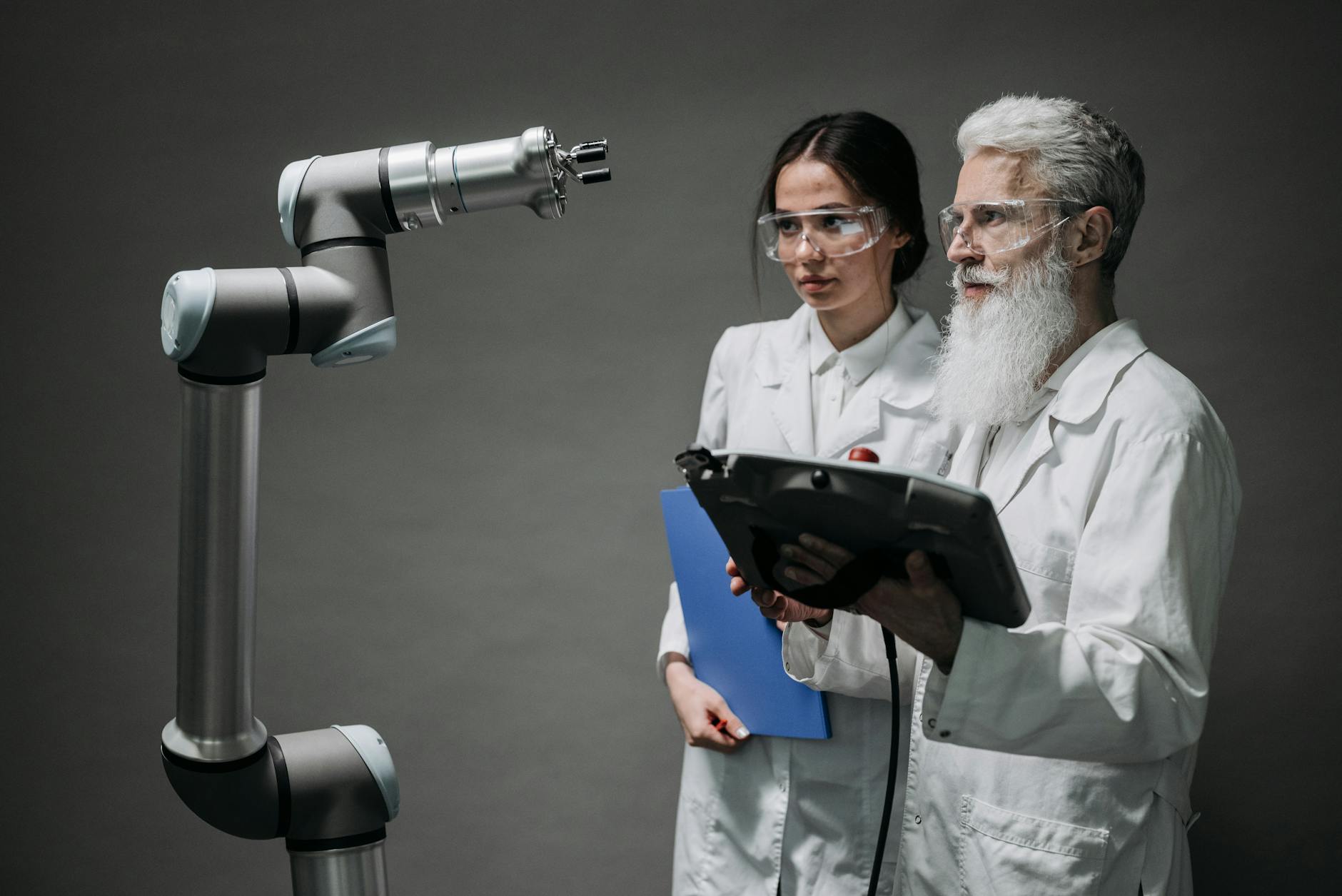From automated blog posts to personalized video scripts, artificial intelligence is revolutionizing the way we produce and consume content. But with this technological leap comes a host of questions: How will AI transform our creative processes? What ethical challenges lie ahead? And most importantly, what does this mean for human creators?
In this post, we’ll dive deep into the AI-powered content revolution, exploring its current state, its impact across industries, and the exciting (and sometimes concerning) trends shaping our creative future. We’ll examine how AI is transforming workflows, tackle the ethical considerations head-on, and uncover the emerging human-AI collaboration models that could redefine creativity as we know it. Buckle up—the future of content creation is here, and it’s more fascinating than we ever imagined.
Current State of AI in Content Creation

AI-powered text generation has made significant strides in recent years. Natural Language Processing (NLP) models, such as GPT-3 and its successors, have revolutionized the way we create written content. These models can produce human-like text for various purposes, including:
-
Article writing
-
Social media posts
-
Product descriptions
-
Email drafts
Here’s a comparison of different AI text generation capabilities:
| Capability | Description | Use Cases |
|---|---|---|
| Autocomplete | Predicts and suggests next words or phrases | Email composition, search queries |
| Paraphrasing | Rewrites text while maintaining meaning | Content repurposing, plagiarism avoidance |
| Language translation | Converts text from one language to another | Global content localization |
| Summarization | Condenses long-form content into brief overviews | News digests, research summaries |
B. Image and video creation advancements
AI has made remarkable progress in visual content creation, enabling:
-
Text-to-image generation
-
Style transfer and image manipulation
-
Video synthesis and editing
-
3D model creation
These advancements have significantly impacted industries such as advertising, entertainment, and e-commerce. AI-powered tools now allow creators to produce high-quality visual content with minimal technical expertise.
C. Voice synthesis technologies
Transforming Content Production Workflows

AI is revolutionizing the content creation process, starting with ideation and research. By analyzing vast amounts of data, AI tools can generate topic ideas, identify trending subjects, and provide relevant statistics in seconds. This efficiency allows content creators to focus on crafting unique angles and adding personal insights.
| Traditional Method | AI-Powered Method |
|---|---|
| Manual brainstorming | Automated topic suggestion |
| Time-consuming research | Instant data analysis |
| Limited trend insights | Real-time trend identification |
Automating first drafts and outlines
With natural language processing advancements, AI can now produce coherent first drafts and detailed outlines. These serve as excellent starting points for human writers, significantly reducing the time spent on initial content structuring.
-
AI-generated outlines provide a logical flow of ideas
-
First drafts offer a foundation for further development
-
Writers can focus on refining and adding creative elements
- Skills for the Future Level Up Your Life
- Future-Proof Your Career: 10 Skills to Master in 2025
- From Home Office to Big Profit: Top Remote Jobs That Pay Well
- 20 Side Hustles You Can Start Today to Make Money Online
- Freelance Your Way to Success: Top Online Gigs for Extra Income
- How to Turn Your Hobbies into an Income Stream Online
- Monetag: The Best Alternative to Google AdSense
- How to Start a Successful Blog That Actually Makes Money
- From Home Office to Big Profit: Top Remote Jobs That Pay Well
Enhancing editing and proofreading
AI-powered editing tools go beyond basic spell-checking, offering suggestions for:
-
Grammar and syntax improvements
-
Style consistency
-
Readability enhancements
-
Tone adjustments
These tools work alongside human editors, catching errors and proposing refinements that might be overlooked.
Optimizing content for SEO and engagement
AI algorithms can analyze top-performing content and provide recommendations for:
-
Keyword optimization
-
Meta description improvements
-
Header structure suggestions
-
Content length and formatting adjustments
By leveraging these insights, content creators can ensure their work is not only high-quality but also optimized for search engines and user engagement.
As we explore the impact of AI on content creation, it’s crucial to consider the ethical implications and challenges that arise from this technological advancement.
Ethical Considerations and Challenges

As AI-generated content becomes more prevalent, questions of copyright and ownership arise. Who owns the rights to AI-created works? This complex issue challenges traditional intellectual property laws.
| Stakeholder | Potential Claim |
|---|---|
| AI Developer | Algorithm creation |
| Content Platform | Data and resources |
| End User | Prompt and idea |
To address these concerns, new legal frameworks may be necessary. Some propose a “AI-assisted work” category, while others advocate for public domain status for AI-generated content.
B. Potential for misinformation and bias
AI systems can inadvertently perpetuate or amplify biases present in their training data. This raises concerns about:
-
Spread of false information
-
Reinforcement of stereotypes
-
Manipulation of public opinion
To mitigate these risks, developers must prioritize:
-
Diverse and representative training data
-
Transparent AI decision-making processes
-
Regular audits for bias and accuracy
C. Job displacement concerns
The efficiency of AI in content creation sparks fears of widespread job losses in creative industries. However, the reality may be more nuanced:
-
Some roles may become obsolete
-
New positions focusing on AI collaboration may emerge
-
Human oversight and creativity will remain crucial
D. Maintaining human creativity and authenticity
As AI becomes more sophisticated, there’s a risk of homogenized content lacking the unique perspectives and emotional depth that human creators bring. To preserve authenticity:
-
Emphasize AI as a tool, not a replacement
-
Encourage human-AI collaboration
-
Value and protect original human-created works
Balancing AI’s potential with ethical considerations will be crucial in shaping the future of content creation. As we move forward, it’s essential to explore how different industries are leveraging AI-powered content creation tools.
AI-Powered Content Across Industries

AI is revolutionizing marketing and advertising by enhancing personalization and efficiency. Here’s how AI is transforming these industries:
-
Personalized content creation
-
Predictive analytics for campaign optimization
-
Automated ad placement and targeting
-
AI-driven customer segmentation
| AI Application | Benefits |
|---|---|
| Chatbots | 24/7 customer service, lead generation |
| Content optimization | Improved engagement, higher conversion rates |
| Dynamic pricing | Maximized revenue, competitive advantage |
| Image recognition | Enhanced visual search, product recommendations |
B. Journalism and news reporting
AI is reshaping journalism by streamlining content creation and distribution:
-
Automated news writing for data-heavy stories
-
Content curation and recommendation systems
-
Fact-checking and verification tools
-
Real-time translation for global news coverage
C. Entertainment and media production
In entertainment, AI is enhancing creativity and production efficiency:
-
Script analysis and generation
-
Personalized content recommendations
-
AI-assisted video editing and special effects
-
Automated subtitling and closed captioning
D. E-learning and educational content
AI is transforming education by creating personalized learning experiences:
-
Adaptive learning platforms
-
Automated content generation for educational materials
-
Intelligent tutoring systems
-
Learning analytics for curriculum optimization
E. Technical documentation and user manuals
AI streamlines technical writing processes:
-
Automated documentation generation
-
Context-aware help systems
-
Translation and localization of technical content
-
Interactive troubleshooting guides
As AI continues to evolve, its impact across these industries will only grow, leading to more efficient, personalized, and engaging content creation processes. Next, we’ll explore the crucial balance between human creativity and AI assistance in content production.
The Human-AI Collaboration Model

Leveraging AI as a creative assistant
AI tools are revolutionizing the creative process, serving as invaluable assistants to content creators. By automating routine tasks and providing data-driven insights, AI frees up time for human creators to focus on higher-level thinking and creative expression.
-
AI-powered brainstorming tools
-
Automated research assistants
-
Smart content optimization suggestions
Enhancing human creativity with AI tools
AI tools are not replacing human creativity but rather amplifying it. These tools can help creators overcome creative blocks, explore new ideas, and refine their work more efficiently.
| AI Tool Type | Creative Enhancement |
|---|---|
| Image generators | Visualize concepts quickly |
| Language models | Overcome writer’s block |
| Audio processors | Experiment with sound design |
Developing AI-literacy skills for content creators
As AI becomes more integrated into content creation, it’s crucial for creators to develop AI literacy. This involves understanding AI capabilities, limitations, and ethical considerations.
Key AI-literacy skills:
-
Understanding AI algorithms and biases
-
Interpreting AI-generated outputs critically
-
Adapting workflows to incorporate AI tools effectively
-
Staying updated on AI advancements in content creation
By embracing the human-AI collaboration model, content creators can leverage the strengths of both human creativity and artificial intelligence. This synergy leads to more innovative, efficient, and high-quality content production. As we move forward, the ability to effectively collaborate with AI will become an essential skill for content creators across all industries.
Future Predictions and Emerging Trends

Hyper-personalized content experiences
AI-powered content creation is set to revolutionize personalization, offering tailored experiences that adapt in real-time to individual preferences. This hyper-personalization will go beyond basic demographic targeting, incorporating behavioral data, contextual information, and even emotional states to craft uniquely relevant content for each user.
| Aspect | Current Personalization | Future Hyper-Personalization |
|---|---|---|
| Data Sources | Demographics, browsing history | Behavioral patterns, emotional states, real-time context |
| Adaptability | Static or periodic updates | Dynamic, real-time adjustments |
| Content Depth | Surface-level customization | Deep, nuanced personalization |
| User Experience | Generic with some personalization | Highly tailored and immersive |
Multi-modal content creation
The future of AI-powered content creation will seamlessly integrate various forms of media, producing cohesive multi-modal experiences. This trend will blur the lines between different content types, creating more engaging and interactive user experiences.
Key aspects of multi-modal content creation:
-
Automated video generation from text inputs
-
Voice-driven content creation and transformation
-
Integration of augmented and virtual reality elements
-
AI-generated interactive infographics and data visualizations
Real-time content generation and adaptation
As AI algorithms become more sophisticated, we’ll see a shift towards instantaneous content creation and adaptation. This will enable:
-
Live event coverage with AI-generated summaries and analyses
-
Dynamic website content that adjusts based on user interactions
-
Adaptive storytelling in games and interactive media
-
Instant translation and localization of content for global audiences
AI-driven content curation and recommendation systems
The future of content discovery will be shaped by increasingly intelligent curation and recommendation systems. These AI-powered tools will not only suggest relevant content but also create personalized content collections and learning paths.

As we look to the future, AI in content creation will continue to evolve, offering new tools and capabilities that push the boundaries of what’s possible. While challenges remain, embracing this technology responsibly and ethically can lead to more engaging, personalized, and impactful content. By staying informed about emerging trends and actively participating in the development of AI-powered content creation, we can shape a future where technology enhances human creativity rather than replacing it.

